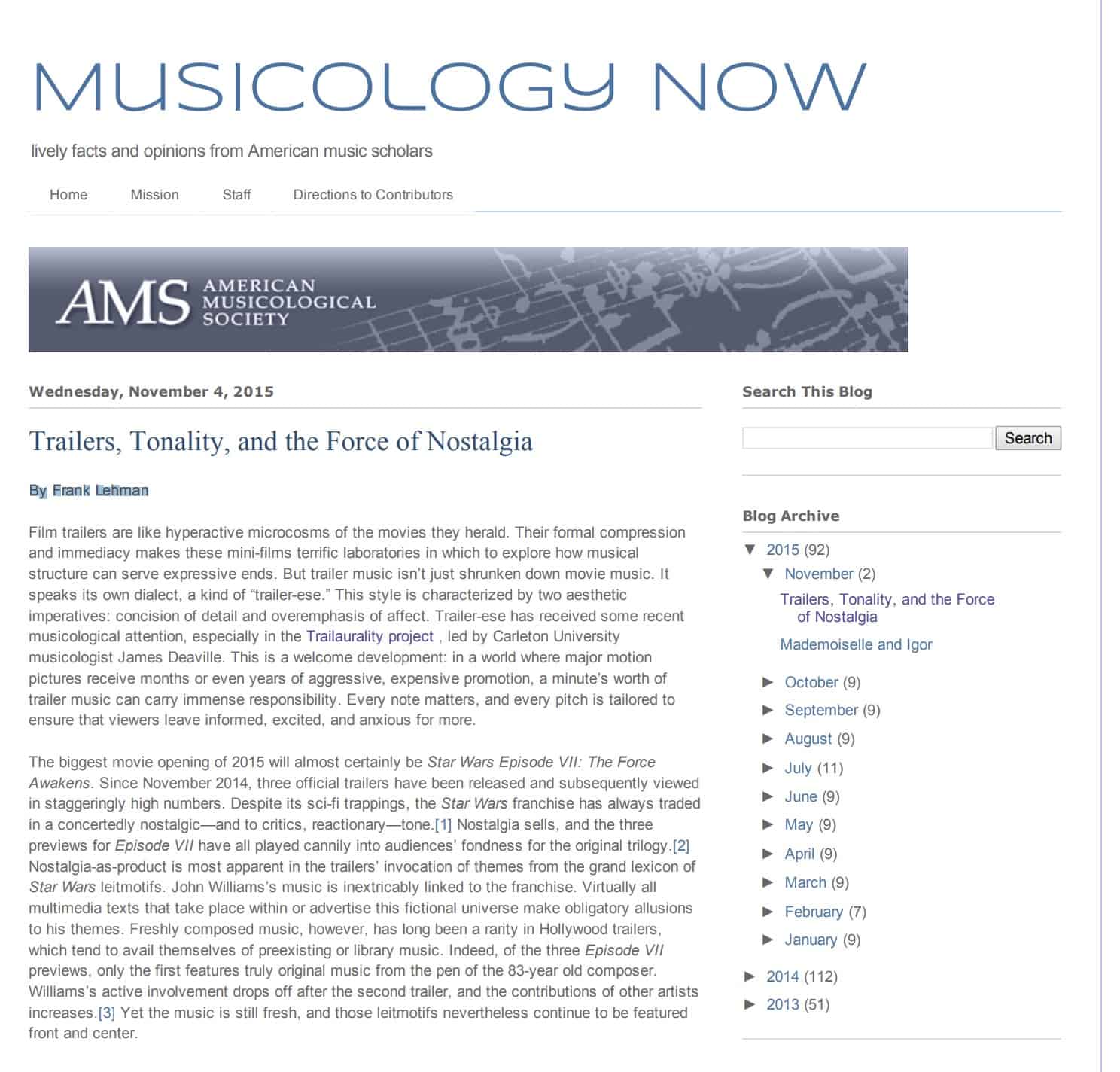Trailers, Tonality, and the Force of Nostalgia
Film trailers are like hyperactive microcosms of the movies they herald. Their formal compression and immediacy makes these minifilms terrific laboratories in which to explore how musical structure can serve expressive ends. But trailer music isn’t just shrunken down movie music. It speaks its own dialect, a kind of “trailerese.” This style is characterized by two aesthetic imperatives: concision of detail and overemphasis of affect. Trailerese has received some recent musicological attention, especially in the Trailaurality project , led by Carleton University musicologist James Deaville. This is a welcome development: in a world where major motion pictures receive months or even years of aggressive, expensive promotion, a minute’s worth of trailer music can carry immense responsibility. Every note matters, and every pitch is tailored to ensure that viewers leave informed, excited, and anxious for more.
The biggest movie opening of 2015 will almost certainly be Star Wars Episode VII: The Force Awakens. Since November 2014, three official trailers have been released and subsequently viewed in staggeringly high numbers. Despite its scifi trappings, the Star Wars franchise has always traded in a concertedly nostalgic—and to critics, reactionary—tone.[1] Nostalgia sells, and the three previews for Episode VII have all played cannily into audiences’ fondness for the original trilogy.[2] Nostalgiaasproduct is most apparent in the trailers’ invocation of themes from the grand lexicon of Star Wars leitmotifs. John Williams’s music is inextricably linked to the franchise. Virtually all multimedia texts that take place within or advertise this fictional universe make obligatory allusions to his themes. Freshly composed music, however, has long been a rarity in Hollywood trailers, which tend to avail themselves of preexisting or library music. Indeed, of the three Episode VII previews, only the first features truly original music from the pen of the 83year old composer. Williams’s active involvement drops off after the second trailer, and the contributions of other artists increases.[3] Yet the music is still fresh, and those leitmotifs nevertheless continue to be featured front and center.
You can read the full paper here.










